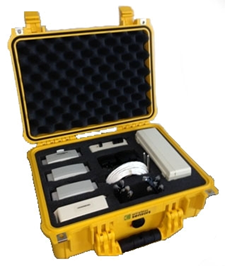Data Centre Cooling Optimisation Webinar
The webinar demonstrates how by combining CFD modeling and realtime wireless measurements the performance and running costs of a data centre can be significantly improved.
The goal of the project was to create a mathematical model of the data centre thermal environment using the CoolSim CFD (computational fluid dynamics) application. The model was built from drawings supplied by the data centre operator.
Measurements of airflow rate and temperature were then taken using wireless sensors and used to validate the model.
Initial results from running the simulation showed that the airflow rate was too high resulting in reduced return air temperatures leading to increased energy required to produce cooled air.
Rack temperatures were, in many cases, below the recommended range as specified in the ASHRAE standards. Overheating is a major concern in data centres from an equipment reliability point of view but data centre cooling is also an issue due to the extra energy consumed to produce the cooling air.
Temperature measurements across the rack heat exchangers also showed that the actual performance did not match the design. Designers clearly have to make assumptions about equipment performance but only by actually making real time measurements in situ are you able to confirm design calculations.
The model was run again with a 30% reduction in airflow rate. This reduced the over cooling issue.
Next the supply air temperature was increased and this further improved over cooling . However in the “high density” area of the data centre over temperature areas now appeared.
Adding a baffle between selected rows and perforated ceiling tiles solved the hot spot issue. In the original design it was assumed the cabinet rear door heat exchangers would prevent over heating .
The combination of the CFD model and wireless measurement sensors allowed the performance of a sub-optimal operating data centre to be rapidly improved.
To quote Paul Richards from Wireless Sensors – “they had a beautiful design, it wasn’t what they built”
The combined effect of the modeled changes are a 43% reduction in air handler power and 10% savings from increasing the air temperature leading to a forecast $400k saving in annual running costs.
The full webinar can be viewed here.


SlideShare
Twitter
Facebook
YouTube
LinkedIn